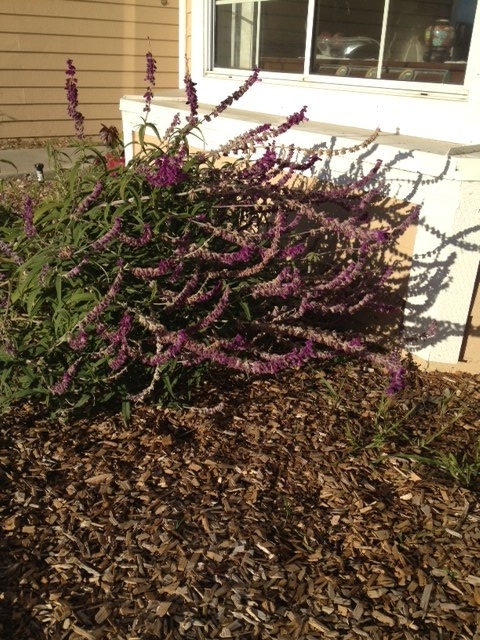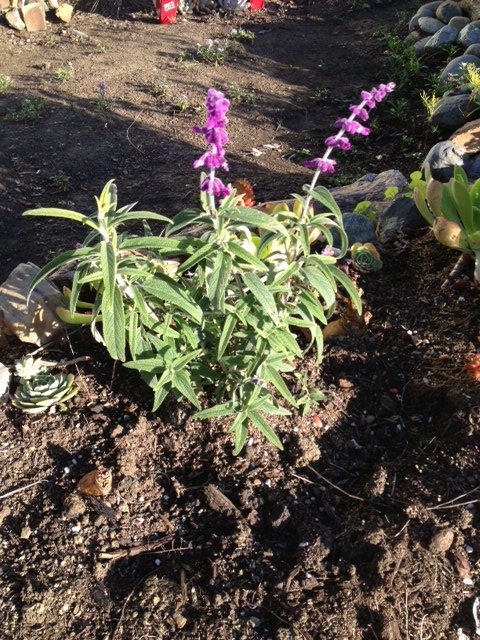AGM Mexican Bush Sage
Salvia leucantha also known as "velvet sage" or Mexican bush sage is an attractive and very hardy perennial. The attributes of Mexican bush sage have been recognized by the British Royal Horticultural Society with an "Award of Garden Merit". To qualify for this award a plant must meet a number of criteria. The plant must be available (a practical attribute), it must be of outstanding decorative value in the garden, it must be of good constitution, not require specialized growing conditions or care, cannot be particularly susceptible to any pest or disease, and not be susceptible to an unreasonable degree of revision. The society recommends this sage for use in cottage or informal gardens and for cut flowers (I've done this and the cuttings droop pretty quickly). It further recommends its use in gravel gardens or gardens planted in a Mediterranean dry garden.
I just like the plant myself. Any plant that can survive, even thrive in an abandoned garden such as the foreclosure next door for 3 years, get chopped to the ground by the flipper who eventually bought the property, and return late this past summer in full glory really deserves to be recognized.
The purple blooms attract wildlife summer through winter. In fact, it is still blooming today. I recently added my own specimen this past fall. It came with a few blooms which have survived the wind, heat and frosty conditions this little plant has seen in just a few months. This sage will eventually grow in a mound form about 3 foot high and wide, reaching maturity in 3 to 5 years. Mine is placed in a full-sun location but this sage will tolerate some shade. The green-grey leaves are soft with a whitish hairy underside and the inflorescence is purple with a velvet texture. Just luscious. Mexican bush sage was reclassified to the Lamiaceae family from the Labiatae family in the 1990's along with many other dry garden favorites. Enjoy this sage for it's beauty and tough constitution.

Survivor next door

Recently planted specimen


Posted by Bud Veliquette on January 22, 2013 at 4:57 PM